Our History
The Oklahoma State Game Warden Association was incorporated in 1985. The organization is a free and voluntary organization, dedicated to the preservation and protection of the bountiful natural fish and wildlife resources of the State of Oklahoma. The goals of the OSGWA are to encourage a stronger camaraderie among Oklahoma Game Wardens; to encourage and develop high standards and practices of professional wildlife law-enforcement; to promote and increase public awareness of the activities performed by Game Wardens; to encourage public support and participation in natural resources protection and to promote, and support shooting sports, hunting and fishing for future generations
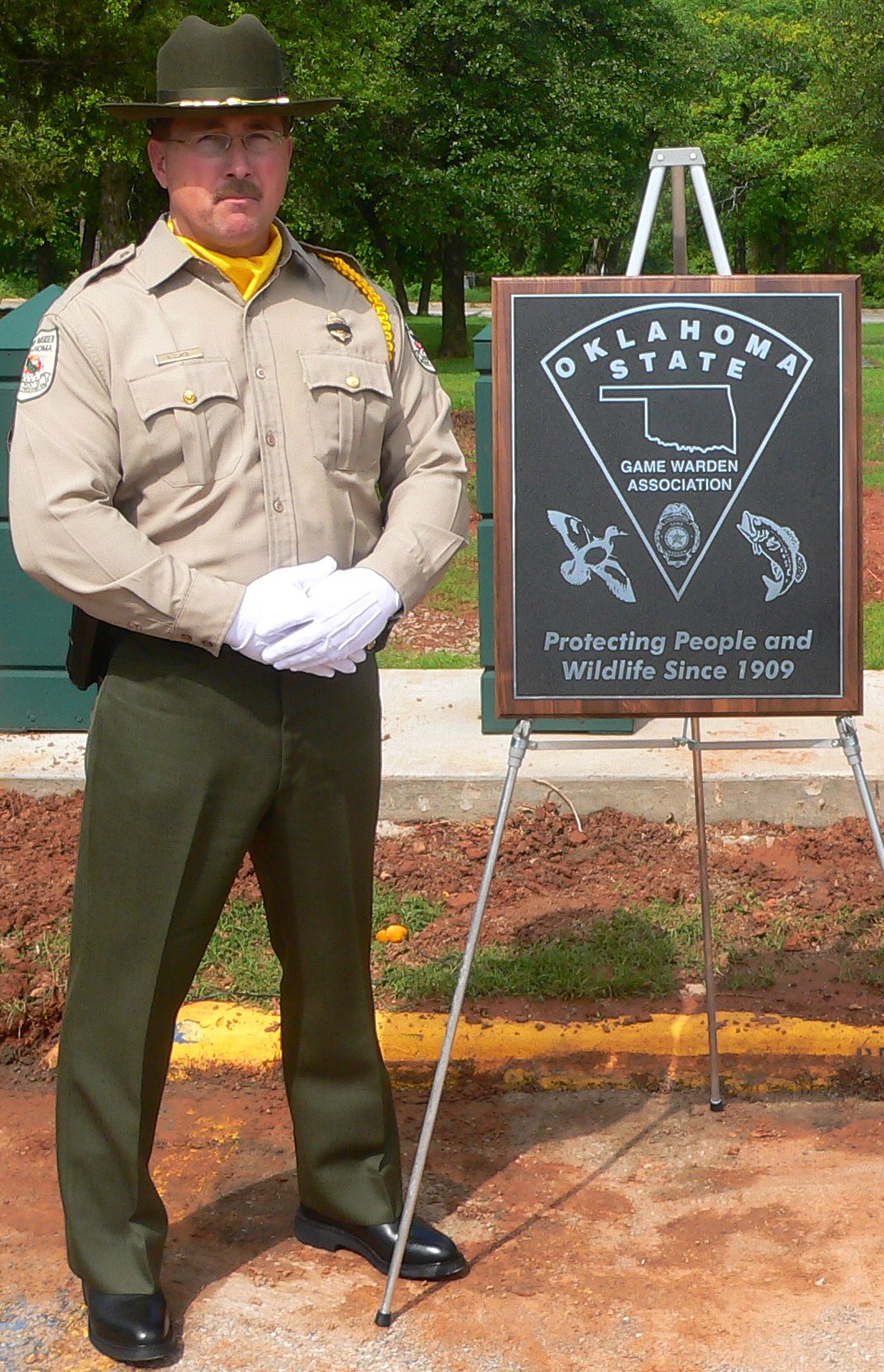
Oklahoma is a state shaped by history and fueled by conservation…
We are a land of flowing waters, pristine wilderness, picturesque mountains, salt flats, sand dunes, black mesas, red dirt, rolling hills, shortgrass, tallgrass and everything in between. The Sooner state’s rich heritage inspires citizens to continue to conserve our abundant diverse species and natural resources.
The year was 1832. Seventy thousand square miles of woodland and prairie lay much as it had for centuries, home to buffalo, elk, antelope, and bear. On the grasslands, prairie chickens danced each spring to the silent drumbeat of their mating season, and in the woodlands, turkey gobbled to attract mates. The howling of wolves echoes nightly throughout the land, while whitetail deer, unused to firearms, would pause within easy gunshot to watch new pale-faced settlers riding through forests and glade.
By 1907 it was all gone. The buffalo had been wiped out. Turkey, antelope and bear had all vanished or were soon to disappear. Even the deer had dwindled to roughly five hundred animals scattered in isolated areas. Also that year, the country these creatures inhabited was given a new name, Oklahoma, and became the forty sixth state in the union. – “Centennial of the Oklahoma Game Warden”, Gary Smeltzer.
Fortunately, Oklahoma’s State Game Warden Office was created in 1909 as the state’s first official state law enforcement now known as the Oklahoma Department of Wildlife Conservation (ODWC). The governor appointed the first game warden and authorized him to hire eight salaried deputies funded by revenue from the purchase of a $1.25 annual hunting license. Currently, the ODWC employs 117 Game Wardens of the Law Enforcement Division, stationed throughout 77 counties. Under our wide-open skies, the department built the first state hatcheries to increase angling opportunities.
We currently operate four fish hatcheries and employ 76 employees among the Fisheries Division. Between the 1920’s-1940’s, the state began protecting furbearing mammals, issued fishing licenses, refined game management techniques, and stocked the state with ring-necked pheasants and bobwhite quail. Our Wildlife Division currently employs 85 biologists and technicians. By the 1960’s, conservation efforts had begun to pay off and the first turkey, elk, and antelope seasons were held. As successful conservation techniques were implemented, hunting seasons expanded, new fish species were introduced, and the department began purchasing wildlife management areas open to public access for outdoor enthusiasts to enjoy. Additionally, the department began Aquatic Resource, Conservation, and Hunter Safety Education programs. Our Information and Education Division currently employs 22 Specialists who educate the public.
The ODWC actively promotes conservation in everything they do. This unique ability to manage, protect and conserve our states wildlife without using a dime of tax payer money is very rare. Its sportsman and wildlife enthusiasts who pay the bill for wildlife conservation in Oklahoma. The sales of hunting and fishing licenses make up the bulk of the agencies annual budget, resulting in a true user pay, user benefit agency. Oklahoma’s conservation history runs deep; through a tradition based on variety and quality where our natural resources live in harmony.
Oklahoma now boasts as a rich species diverse state where most fish and game populations are thriving thanks to increased protection and wise conservation practices. Making sure opportunities exist for hunters, anglers and all those who appreciate wildlife is not only our job… it’s our passion.
Oklahoma Game Wardens emphasize their work seasonally throughout the year from species to species. The Spring begins with Wardens working crappie and white bass fishing along the creeks and spring fed streams. As the redbuds start to bloom, turkey season begins, and Wardens watch over their flocks. The spring rains bring water rushing south, swelling the banks of the Arkansas, Verdigris, and Neosho Rivers. These flowing rivers are prime spawning grounds for paddlefish. As water temperature and water flow increase paddlefish will run up the rivers to spawn. Many Oklahoma anglers participate in this unique fishing opportunity. The unfortunate consequence for having such an exceptional fishery is the fact that it could be easily taken advantage of. History has shown us that if there is a way to exploit a resource for profit then it will surely happen. Paddlefish from our Neosho River system is no exception, as they have shown to produce the some of the finest caviar in the world. This high-priced delicacy attracts black market poachers from around the globe.
“Making sure opportunities exist for hunters, anglers and all those who appreciate wildlife is not only our job… it’s our passion.”
Game Wardens work many hours saturating these Rivers with patrols around the clock while the fish are running. As the summer heat begins to fade, wing shooters try their luck on migratory dove in September. As dove season wraps up, Wardens begin the long-awaited deer season in October. Deer season is a long-honored tradition in Oklahoma with some school systems letting kids out of school for part of the highly anticipated deer gun season. A few years back ODWC opened elk season in many parts of the state giving Wardens a unique species to enjoy managing. With winter in full swing, Oklahoma becomes a bird hunters paradise. The north western part of the state has a booming population of quail and pheasants with agricultural fields stretching as far as the eye can see. Waterfowl hunting in Oklahoma has become second to none as ducks and geese utilize the central flyway. Waterfowl hunters flock to the sooner state for its exceptional wetland development units and plethora of lakes and rivers. With duck season running through January and Goose season to mid-February, Wardens have plenty to keep them busy throughout these winter months. Spring is just ahead, and Wardens are eager to ensure the protection of all of these species that call this rich and diverse state home.
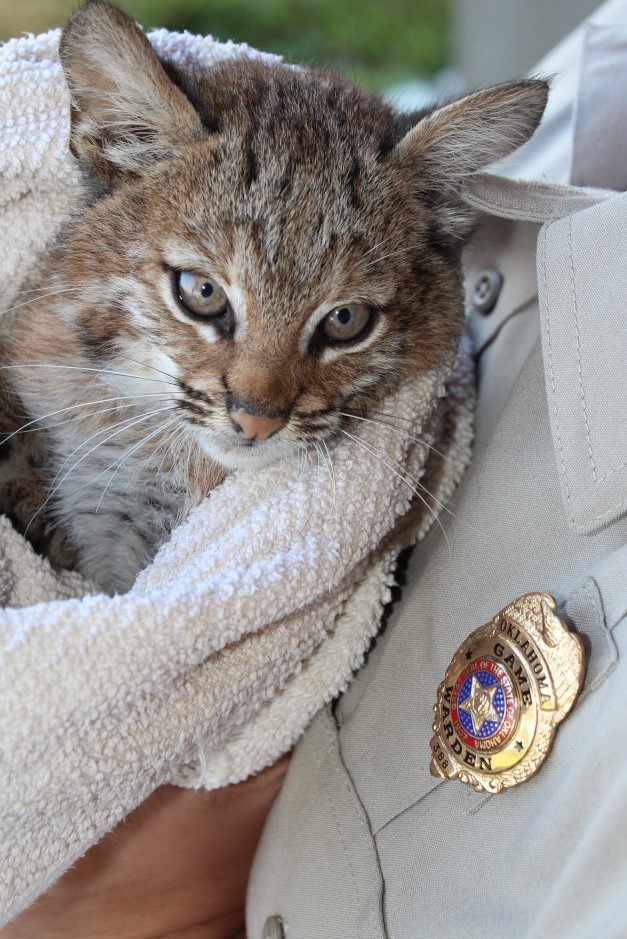
Oklahoma Game Wardens are among the highest educated, trained, and equipped Law-Enforcement in the state. Oklahoma requires applicants to possess a bachelor’s degree before applying. Preference is given to those who posses a degree in biological sciences. The best applicants will be selected for interviews as the positions are highly competitive and require top scores on employment exams, interviews, background investigations, and drug screens. Only the most qualified become Oklahoma Game Wardens. Once hired, the constant training begins. New hires are required to go through an in-house 9-week program at the ODWC headquarters in Oklahoma City. Once completed, the new Wardens attend a sixteen-week state law-enforcement academy. After graduation from the academy the new officers are assigned to their respective districts where they undergo another nine weeks of field training with their field training officers and supervisors. After thirty-four weeks, the new Wardens are ready for their assigned counties. All Oklahoma Game Wardens attend a minimum of twenty-four hours of continuing law-enforcement education, mental health training, and firearms qualifications each year.
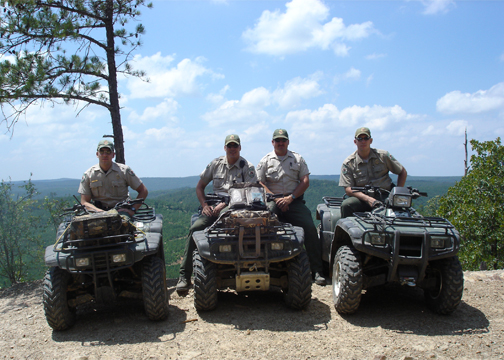

The days of bucket holsters and red handkerchiefs tied around a blinking spotlight are over. Todays well equipped crime fighter has tools for just about every facet of their job. Oklahoma Game Warden’s ride to work is a comfortable one; since ODWC has taken steps to issue new trucks to Wardens who have racked up 90K miles or more. These 4×4 trucks are fully equipped with light bars, low band, high band and 800mghz radio communication systems. Additionally, each truck is outfitted to patrol in total blackout patrol mode utilizing infrared lighting in conjunction with officer mounted night vision helmets. Wardens with large remote areas are issued ATV’s and side by side utility vehicles to patrol off road areas. Many Wardens stationed near water have been issued the latest watercraft including large patrol vessels equipped with down scan sonar. All Game Wardens are issued lighted M4 rifles with aimpoints, 870 Remington 12 ga. shotguns, and the latest generation .40 caliber Glock pistols equipped with surefire lighting. It is safe to say from the city streets to the furthest back road that Oklahoma Game Wardens are ready and equipped to meet the challenges of the modern-day law enforcement officer.
Oklahoma Game Wardens are resourceful and technologically savvy in and out of the field. In the mid 1980’s road hunters were running rampant across the state. Wardens were desperate for a tool to help stop such activities. On a cold frozen night, one warden passed a deer that had been struck by a car. He envisioned utilizing that deer as a decoy. The frozen deer was setup in an area known for road activity. It didn’t take long until someone drove by and took the shot. The rest is history and the robotic deer decoy evolved into a great tool to reduce road hunting in Oklahoma. Just recently, Wardens have begun to collect DNA evidence to link suspects with crime scene samples. For years we had to make educated guesses and hope for a good confession. With DNA testing, we can build a stronger case to help ensure prosecution. Oklahoma Game Wardens have also enlisted social media as an investigative tool and a place to interact with the public. The Wardens assigned to administrate these sites answer questions, receive tips, and promote the law enforcement division. This has proven to be a valuable tool to enhance public outreach, make it easier for sportsman to turn in violators and build a following that generates interest in wildlife law enforcement. These new tools are successfully aiding Wardens to compile evidence sufficient for prosecution throughout our state legal system. The ODWC has recently launched a new web based licensed system. This system allows sportsman to apply for special licenses and controlled hunts, purchase and store annual licenses, check harvested wildlife, and link family members as a family group from their smart phone or web-based device. The new system also gives sportsmen the ability to enroll in an auto renewal program to generate a valid license upon expiration. Furthermore, this system allows the law enforcement division the ability to access the secure state-wide licensing system on their smart phones or laptops while in the field. Oklahoma Game Wardens have been able to adapt to our on-demand world by implementing ingenuity and innovative technology.
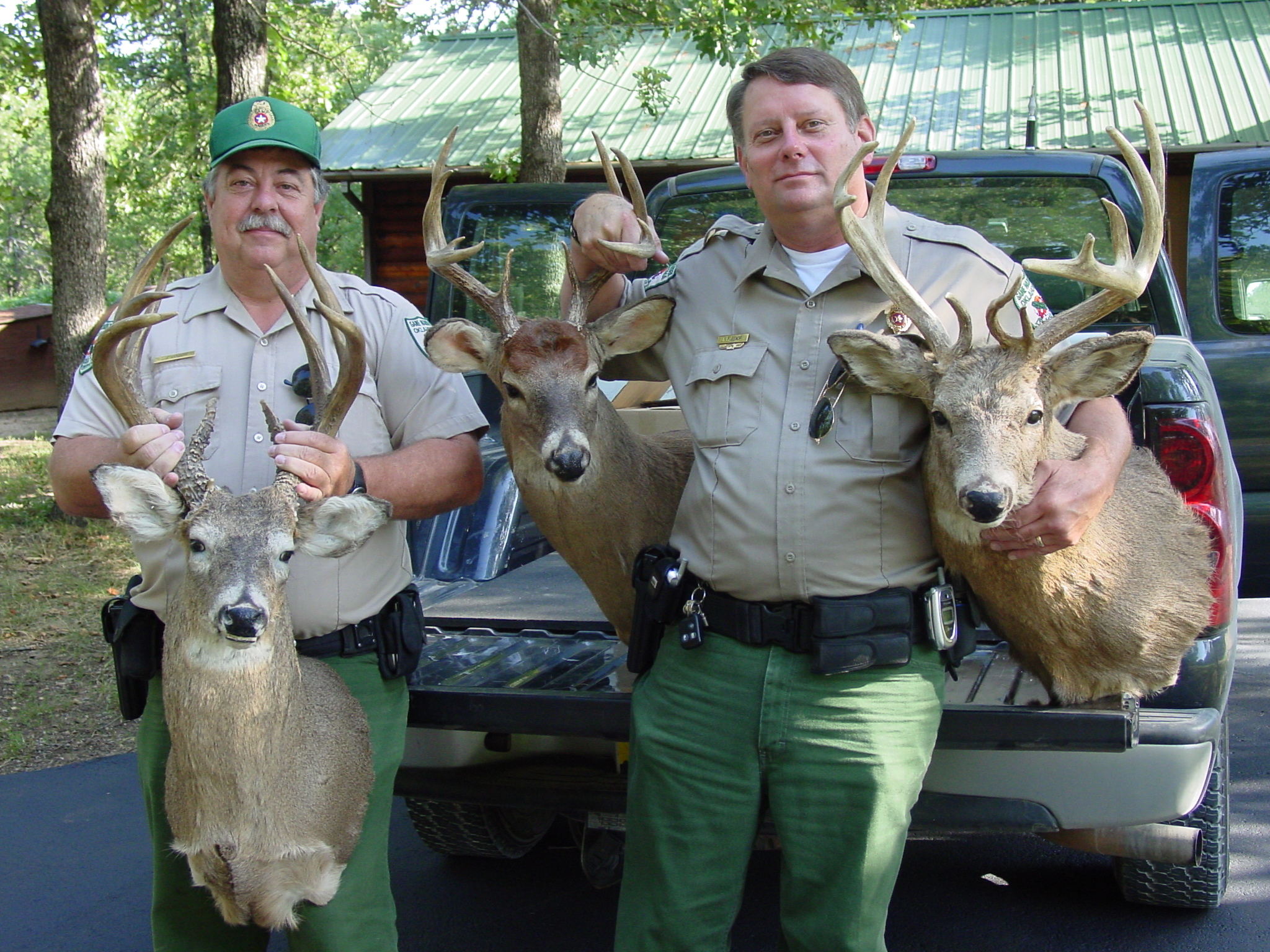
The men and women who comprise the Oklahoma Department of Wildlife Conservation’s Law Enforcement Division are more than just a badge and a gun. These men and women truly care about conservation and serving the public to ensure the future of hunting and fishing in Oklahoma remains bright. They constantly sacrifice their time and energy promoting the sport while bringing the next generation of sportsmen into the outdoors. Wardens spend countless hours teaching hunter education courses and giving educational programs to civic groups in their communities. Wardens facilitate and host a wildlife youth camp for teens who want to pursue careers in the conservation field. This week-long camp exposes teens to the roles of each division of the ODWC. It is not uncommon to find Wardens assisting other divisions within the Department. They often help with conservation management such as prescribed fires, waterfowl banding, building food plots, fishing reports, and biological surveys. Game Wardens are proud to be part of the ODWC family and are always eager to help other divisions meet and exceed their goals.
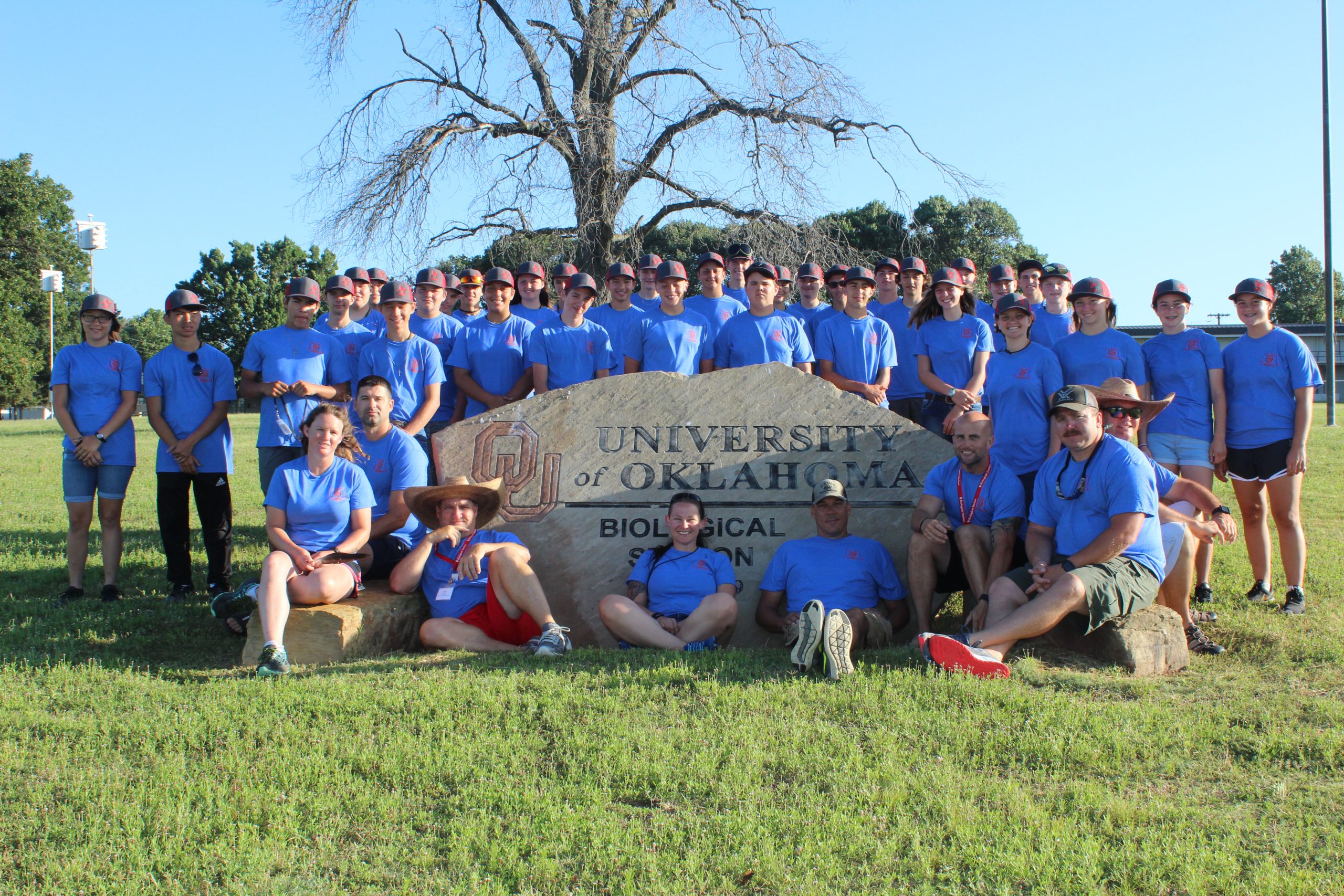
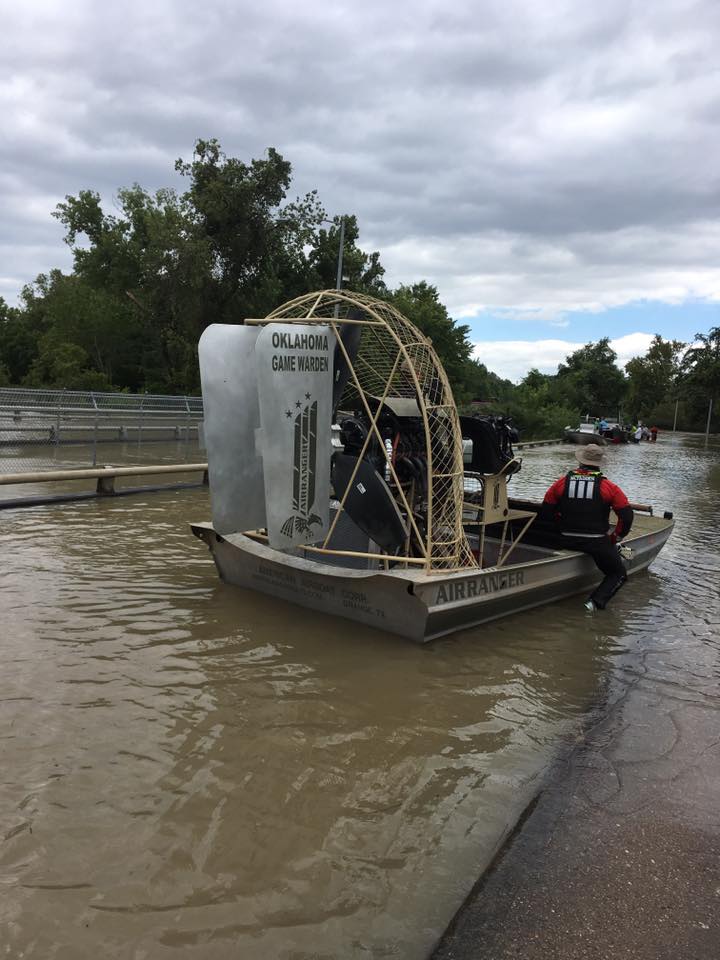
“Oklahoma Game Wardens stand ready to help when disaster strikes.”
Game Wardens are on the front lines of law enforcement and conservation. With advanced training in search and rescue, Oklahoma Game Wardens stand ready to help when disaster strikes. When Hurricane Harvey struck Houston and the coastal communities of south Texas, Oklahoma Game Wardens were eager to launch a support mission to aid in rescue operations by air boats. These dedicated officers risked life and limb helping those most vulnerable. Their compassion for the public runs deep and they’re ready to serve without hesitation when disasters strike.
Many Game Wardens are the face of conservation and the ODWC in their communities. Wardens frequently support their communities as volunteer firemen, civic leaders, baseball coaches, and mentors. They take ownership as leaders, understanding that “conservation starts with me.” If there were no Game Wardens, there would be no wildlife… and if there were no wildlife, the world we currently know would not be the same. These men and women are so much more than just a badge and a gun, they are Oklahoma Game Wardens.
Written By: Former OSGWA District 1 Director – Lt. Joe Alexander
© Copyright 2020, All Rights Reserved – Oklahoma State Game Warden Association